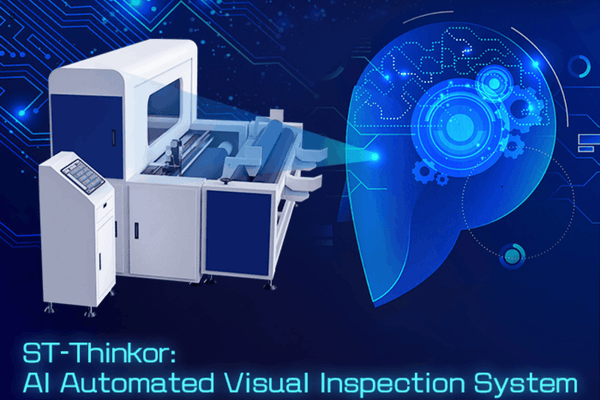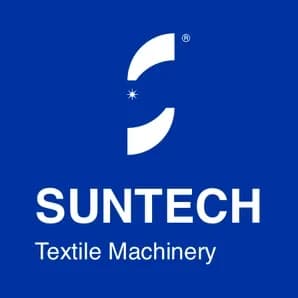
Introduction
The textile industry is an industry that pays great attention to quality control. Whether it is the production, dyeing and finishing of fabrics or the inspection of finished products, the stability of quality directly affects the brand image and market competitiveness. Traditional quality control methods, such as manual inspection and basic machine vision, can no longer meet the modern textile industry's demand for high efficiency and high precision.
As consumers' requirements for textile quality increase, intelligent technology has emerged. AI intelligent detection, with its powerful data processing capabilities and accurate defect recognition functions, has become one of the core technologies for modern textile quality assurance.
AI Intelligent Detection Fabric
AI intelligent detection technology is to use artificial intelligence (AI) algorithms to monitor, identify defects and evaluate the quality of textiles in real time. Using machine vision, deep learning and data analysis technologies, AI systems can accurately identify various defects on fabrics, such as color difference, thread ends, and strains.
This technology can not only improve the accuracy of detection, but also complete large-scale production line detection in a short time, saving a lot of manpower costs for enterprises and improving production efficiency.
Advantages of AI Intelligent Detection
Improve Detection Accuracy
Traditional manual detection not only sets people's energy and vision, but also easily leads to omissions. AI intelligent detection can capture critical tissue defects through high-resolution cameras, and classify and judge defects with the help of deep learning technology, which greatly improves the accuracy of detection.
Improve Production Efficiency
AI intelligent detection systems can work in large quantities without rest and can monitor in real-time and efficiently on high-speed production lines. This large-scale full-cycle production helps companies reduce defective products while increasing production speed.
Reduce Labor Costs
Manual detection not only requires a large amount of manual input, but also easily reduces accuracy due to factors such as fatigue and working environment. AI intelligent detection reduces the labor costs of enterprises by replacing manual measurement with automation.
Limitations of Manual Detection
The efficiency and accuracy of manual detection are preset on people's vision and judgment ability, and long-term repetitive work is also prone to omissions. Especially in mass production, manual detection makes it difficult to ensure the quality consistency of each product.
Advantages of Machine Vision and AI Intelligent Detection
Machine vision combined with AI technology can quickly scan the entire tissue surface and automatically identify and classify defects through high-speed cameras and powerful computing power. Compared with traditional manual inspection, AI intelligent inspection has an extremely low error rate and can provide amazing defect data, which is convenient for upgrade analysis and improvement.
Working Principle of AI Intelligent Detection
Data Acquisition and Processing
AI intelligent detection first needs to shoot the tissue through the camera on the head and transmit the image data to the processing system. The data acquisition process needs to ensure that there are no dead angles and capture every part of the tissue.
Image Recognition and Defect Classification
Through machine learning and deep learning algorithms, the AI system can identify various defects on the surface of the fabric and classify them according to the type of defect. For example, it can classify defects into different categories such as color difference, broken yarn, oil spots, etc., and then perform subsequent processing.
Deep Learning and Self-Optimization
The AI system can gradually improve the accuracy of defect recognition through continuous learning and optimization. When a new defect type is detected, the system will automatically update the database and optimize it to improve the detection effect.
Key Indicators for Improving Textile Quality
Detection Accuracy
One of the core indicators of AI intelligent detection system is its detection accuracy. Through high-resolution cameras and deep learning algorithms, AI can identify very subtle defects on the surface of fabrics to ensure that the quality of each product meets the standards.
Defect Classification
Through accurate classification of defects, AI can provide enterprises with more data support to help optimize production processes and improve quality management.
Consistency Guarantee
One of the advantages of AI intelligent detection system is that it can ensure quality consistency while working efficiently. Under different batches and production conditions, AI system can maintain consistent detection standards and high precision to ensure that each batch of textiles produced meets quality requirements.
How to choose?
When choosing an AI intelligent detection system, companies need to consider the following points:
Functional requirement analysis: Select appropriate detection functions according to the company's production characteristics and quality control requirements.
Technical support and after-sales service: Ensure that suppliers provide long-term technical support and after-sales service so that problems can be quickly resolved when they arise.
Conclusion
With the continuous development of artificial intelligence technology, AI intelligent detection systems will become more intelligent, precise, and efficient. In the future, AI technology will play a greater role in all aspects of the textile industry and promote the digital transformation of the entire industry.
AI intelligent detection not only improves the consistency of textile quality but also brings higher production efficiency and lower labor costs to enterprises. With the continuous advancement of technology, AI intelligent detection will play a more important role in the textile industry in the future.







